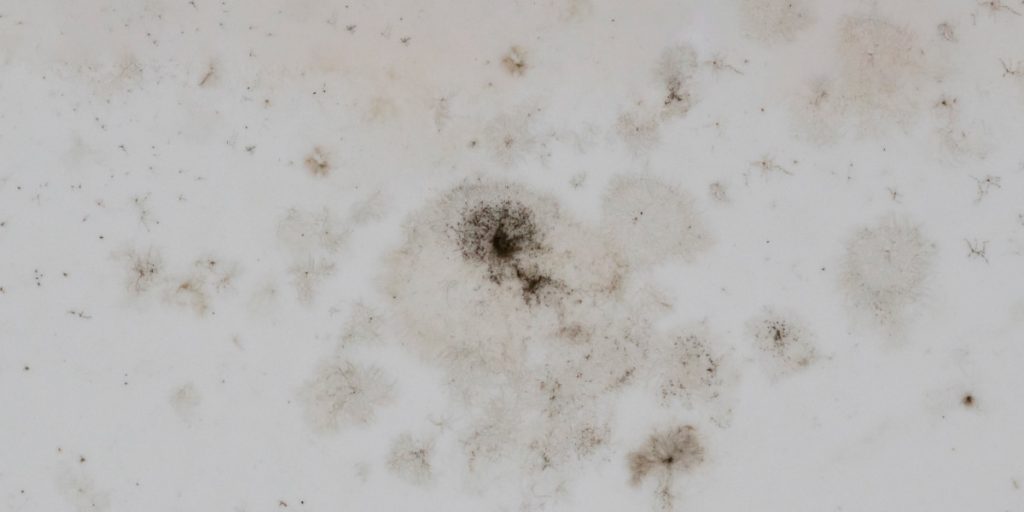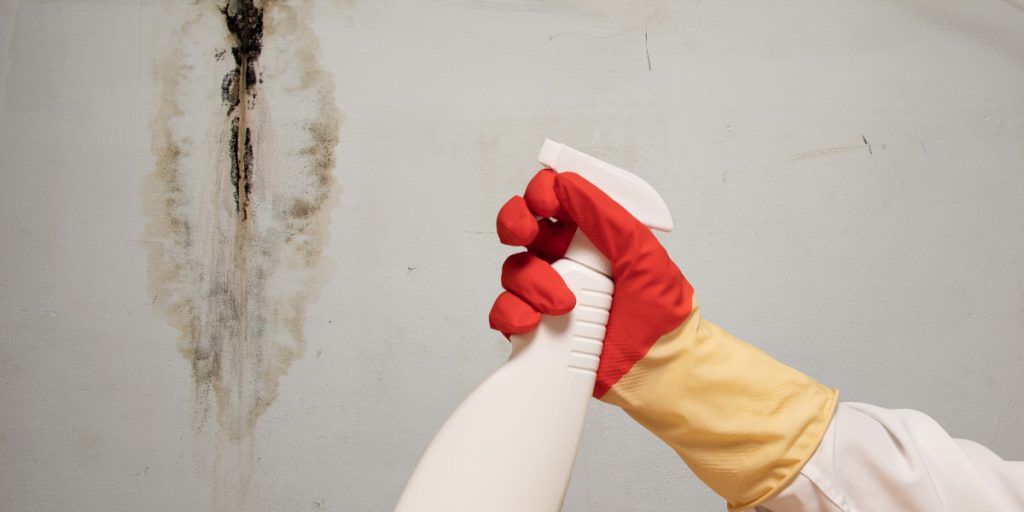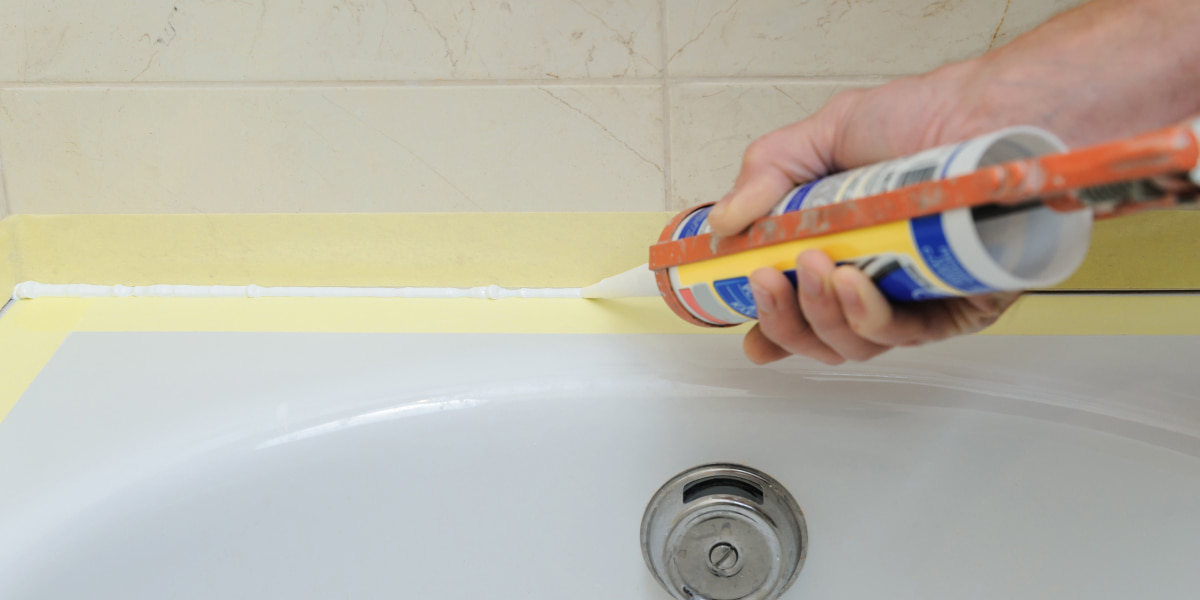Published on November 4th, 2022
Last updated on February 3rd, 2023
How To Get Rid Of Shower Mold?

While admiring your modern, stylish bathroom, did you accidentally notice minor black stains? Is there a musty smell in the bathroom? Have you found brown or black spots on the shower curtain covering your cast iron or acrylic tub? Unfortunately, you are faced with an unpleasant phenomenon – the spread of black mold in the shower, so you should know how to get rid of it as quickly as possible.
The dark deposit is not just an unsightly surface defect that spoils the look of your bathroom; shower mold is a real threat to your health. Allergic reactions, irritations on the skin, diseases of the bronchopulmonary system, and headaches – all these problems can be caused by mold. The fight against fungus and mold must begin immediately to prevent its growth.
In this article, we’ll discuss everything about mold, from the causes of shower mold to ways of removing mold from the shower.
Causes of Black Mold in the Shower

Before discussing ways of removing mold from the shower, we need to remind you why mold appears. Bacteria and microorganisms like a warm, humid environment and lack of sunlight, and the bathroom is the perfect place for them to live. If you:
- did not treat the walls and ceiling with an antifungal agent during the renovation process,
- did not install a towel rail that was not powerful enough,
- do not ventilate the bathroom after water procedures,
- often dry laundry in the bathroom,
- do not regularly check the pipes for their integrity,
You’re likely to get mold in your bathroom. Black dots, brownish spots, areas with a dark gray scum on the ceiling and walls – that’s what the fungus you have to remove looks like. Remember that a simple wash with a cleaner will not help you – you will remove the visible traces of shower mold but not eliminate its cause.
That’s why you need to think not about how to clean unsightly stains but how to deal with mold.
How to Clean a Bathroom From Mold and Fungus

First, carefully inspect the bathroom, paying particular attention to the places that mold especially likes – corners, inter-tile joints, and joints. If the black mold in the shower settles on the plaster, you should carefully remove the infected areas, clean them, and then dry them well. Then you must necessarily treat the places with an antifungal agent.
If mold is visible on the seams of tiles, then try to remove the infected part of the grout, dry the place, apply an antibacterial treatment, and re-grout the seam with grout.
If the black mold in the shower is found on the sealant that closes the joints between the tub and tile or on the tiles, then carefully clean the surfaces, dry them and treat them with a mold repellent.
Remember, good drying helps to get rid of microorganisms completely. Don’t use wet rags when removing traces; this will only complicate the process since it’s the humidity that bacteria love. The ideal solution is to dry for a few minutes with hot air from a hair dryer.
Remedies for Removing Mold From the Shower

Deciding how to remove shower mold and choosing preparations, you can stop at ready-made chemical compositions and proven folk remedies. Purchased compositions are applied to the surface after the time specified in the instructions are rinsed off. Be sure to wear rubber gloves because many products contain aggressive components and damage the skin.
You can use folk solutions if you identify yourself as a supporter of traditional cleaning without chemicals.
Folk remedies can cope with black mold in shower no worse than store-bought. The main thing is to know what remedies and how to use them.
Bleach
Laundry bleach is quite capable of removing mold from the shower. Treat the surface with a mixture of 2 liters of water and 1 cup of bleach. If the affected areas are out of reach, the mixture may not need to be rinsed off. You should rinse places where children or animals can reach with water.
Vinegar
Vinegar is a proven home remedy that helps clean the bathroom and remove shower mold. To get rid of the fungus, it’s best to take undiluted vinegar and spray it on the tiles. After an hour, wipe the treated areas and dry them.
Vinegar is also an excellent means of prevention – treating the joints between tiles and joints a couple of times a month will significantly reduce the likelihood of germs.
Baking Soda
You can also count baking soda among the most popular harmless cleaning products; it will help remove mold from the shower.
Dissolve one teaspoon baking soda in 400 ml of water and spray on the infected areas. After 10 minutes, go over the surfaces with a stiff brush or sponge, removing contamination, then rinse again with a baking soda solution and dry.
Hydrogen Peroxide
This cheap drugstore product is an excellent remedy for removing mold from the shower. The peroxide should be used undiluted to treat areas where there are lesions and leave for 15 minutes, then wipe off with a dry cloth.
Note that peroxide can bleach some materials, so test the preparation on a small area before treatment and ensure that its color has not changed.
Borax
Borax is another drugstore product that you’ll need to remove black mold in the shower. Treatment with borax is one of the safest methods of killing fungus; this substance with antiseptic properties is harmless to humans and animals.
Dilute 1 cup of borax in 2.5 liters of water and wash the tiles, seams, and joints while removing black stains with a scraper. It is not necessary to add rinse surfaces; wipe them dry.
How to Remove Mold in Difficult Cases

If the situation is far gone, and black mold in the shower has affected an extensive surface, you will need more effective substances. Chlorine and copper sulfate are excellent solutions to the problem. In any case, do not forget that these compositions are aggressive and toxic, so be sure to ventilate the bathroom during and after treatment and use rubber gloves.
- Chlorine
Chlorine is a powder with a pungent odor. To prepare an antifungal mixture, dilute 30 grams of chlorine in one liter of water. Rinse all areas, scrubbing off stains, then rinse with water and wipe with a dry towel. The bathroom should be ventilated after such disinfection.
- Copper sulfate
Copper sulfate is a powder that should be dissolved in water at 10 grams per 1 liter of water. Brush on surfaces infested with fungus and apply it several times. It takes a few hours to dry. After all, areas are thoroughly washed with water and dried with a hair dryer, and the bathroom is ventilated.
Anyone can agree with the statement that the bathroom should be kept perfectly clean. This room is intended for hygienic procedures, meaning the bathroom needs to be cleaned regularly. But if mold has already appeared, do not worry. Mold in the shower is quite common and can be eliminated with our traditional methods without spending much money.
FAQ
How to get rid of shower mold?
Getting rid of mold in the shower is not difficult; you need to choose one of the cleaning options (natural products or chemicals) and apply it to the area with mold. After the allotted time (depending on the selected method), remove the product and enjoy a clean shower without black stains.
Can shower mold harm my health?
Mold in the shower can cause a person to experience allergic reactions such as skin rash, runny nose, watery eyes, etc. In severe cases, black mold in the shower can lead to inflammation of the lungs. Therefore, it is necessary to remove mold as soon as possible.
How do I prevent mold from appearing in my shower?
To prevent mold from appearing in the shower, you must wash the room regularly and ventilate it after each shower. You can also use a special anti-mold spray sold in any hardware store.


